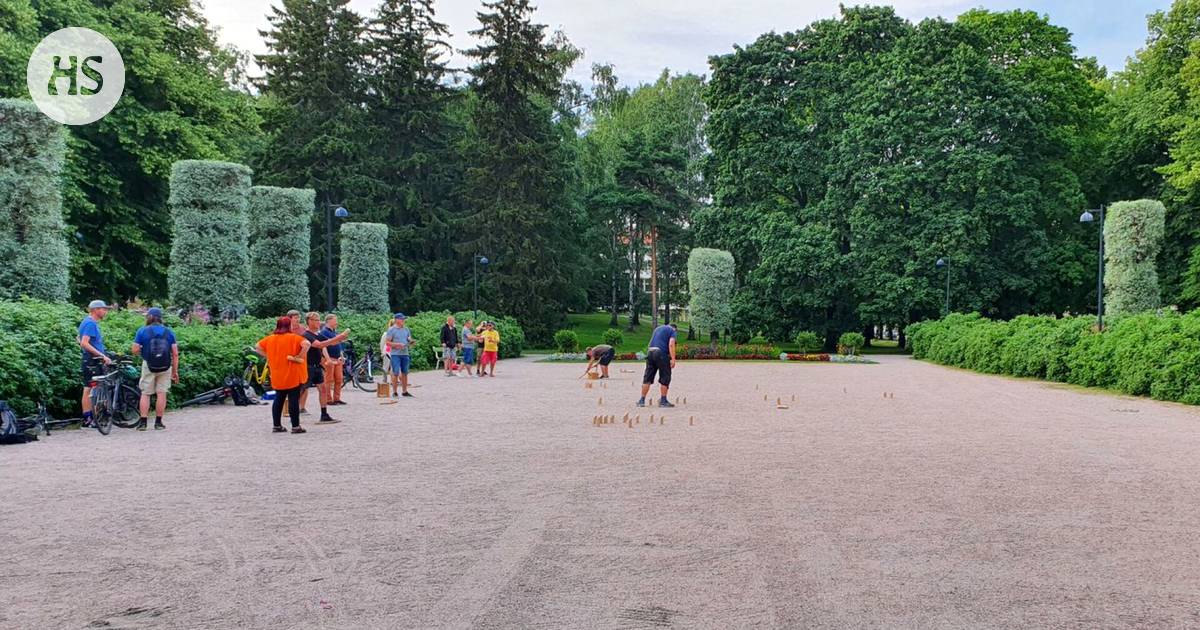According to Timo Hämäläinen’s calculations, Helsinki has almost sixty sand courts. He questions their significance as an urban space.
15.8. 17:51
Are you ever wondered why there are so many sand courts in Helsinki? Timo Hämäläinen is.
Hämäläinen does consulting as an urban policy advisor, but his interest in sand courts arose outside of work hours.
Everything started from Karhupuisto.
“There is that triangular sand court area, where there are sometimes mölky players and sometimes flea market activities. Most of the time there is nothing in it,” says Hämäläinen.
Then something happened in the first corona summer in 2020.
“The terrace of the nearby Femma bar, Yläfemma, filled the space and brought people there. I thought that there is still room here to play molkky, but a new service will be brought to the park,” says Hämäläinen.
The terrace apparently didn’t get permission for the following summer. Hämäläi was devastated by the case.
“It’s sad to watch, when you know what’s there has the potential to be much more than an empty sand field.”
Karhupuisto’s Yläfemma was a great success in Hämäläinen’s opinion.
Hämäläinen rolled up his sleeves and started surveying the matter. The topic was born blog post, where he reflects on the future of Helsinki’s sand courts. Hämäläinen calls the fields “little deserts”, referring to their unused potential.
According to Hämäläinen’s calculations, there are almost sixty sand fields in the city of Helsinki. Their more precise locations can be found on the map found in the blog link.
However, the criteria for the fields are quite broad. For example, the wide sand corridors of Hollolanpuisto and the sports fields located next to a few schools, which have a clear purpose, have made the list.
According to Hämäläinen’s blog, the three wide sand corridors in Stadioninpuistiko are borderline cases.
Requirement according to Hämäläinen, it is not the case that all fields should be removed immediately. He also knows that sand courts have their purpose.
“They are attended by schoolchildren in physical education classes and kindergarten groups. Mölkky and pétanque teams and smaller events enjoy themselves on the sand courts.”
Hämäläinen’s wish is that the city sharpens its sand court policy.
“Especially in the inner city, where people are crowded together, it is important to have good quality parks and public spaces. They create well-being and enjoyment.”
Based on Hämäläinen’s observations, the sand field located next to the Taivallahti playground is mostly only used as a shortcut.
What so should it be done on sand courts?
“Many could be greened in many different ways, especially when green areas in Helsinki seem to be lost to construction.”
“Could the sand court be, for example, half the size? The park areas could be expanded, or the city could bring in box cultivation areas,” suggests Hämäläinen.
The playgrounds could expand at the expense of the fields, as they are located next to each other in many places. Terraces like Karhupuisto’s Yläfemma are also emerging as services brought to the park.
However, in Hämäläinen’s opinion, it would be best if the space was given to the townspeople for free use.
“If someone from the environment wanted to develop something original, then it could be implemented,” he reflects.
A small slice has been carved out of the corner of the sand field in Alli Trygg park for box cultivation.
So far, Hämäläinen has shared his blog text to, for example, a few Facebook groups, managers of the urban environment industry and members of the Urban Environment Board.
#Environment #Timo #Hämäläinen #interested #everyday #phenomenon #Helsinki #Empty #space #unused #deserts









